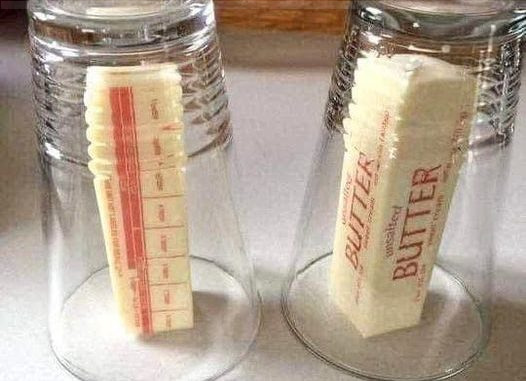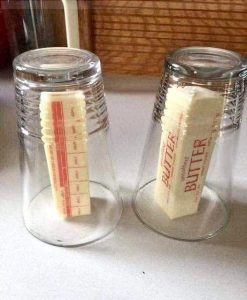
When it comes to baking, having the right consistency of butter is crucial. But what do you do when you need softened butter in a hurry, and you don’t want it to melt into a puddle? We’ve got you covered with one of the best baking tips ever. This incredibly simple technique involves using boiling hot water and a glass to achieve perfectly softened butter in just a few minutes. I’ve tried this method multiple times, and it works like a charm. So, let’s dive into this fantastic butter-softening hack!
The Butter-Softening Method
One of the Best Baking Tips Ever
This really works, as I’ve tried this a few times already!
If you need to soften butter quickly but don’t want to melt it, follow these easy steps:

- Boil Water: Start by boiling some water. You’ll need enough to fill a glass.
- Prepare the Glass: While the water is boiling, find a glass that’s large enough to fit over a stick of butter. Make sure the glass is heatproof.
- Heat the Glass: Pour the boiling water into the glass, filling it to about one-third full.
- Dump and Flip: Carefully dump out the hot water from the glass. Then, quickly flip the glass over your stick of butter, ensuring that the butter is completely covered by the mouth of the glass.
- Wait a Few Minutes: Leave the glass in place for a few minutes. The residual heat from the glass will gently soften the butter without causing it to melt.
- Use Softened Butter: After a few minutes, remove the glass, and you’ll find that your butter is perfectly soft and ready to use!
Why This Method Works
This ingenious technique works because the glass traps the heat from the boiling water, creating a warm environment that softens the butter without subjecting it to direct heat. It’s a game-changer for bakers who need softened butter in a pinch.
Expert Tips for Using Softened Butter
Now that you know how to quickly soften butter without melting it, here are some expert tips to make the most of this method:
- Room Temperature Butter: This method is great for recipes that call for room temperature butter. Softened butter blends more evenly into batters and doughs, giving your baked goods a better texture.
- Controlled Softening: You have control over how soft the butter becomes. Leave it under the glass for a shorter time if you want slightly firmer butter or a bit longer for very soft butter.
- Be Patient: While this method is quick, don’t rush the process. Let the heat work its magic, and you’ll be rewarded with beautifully softened butter.





